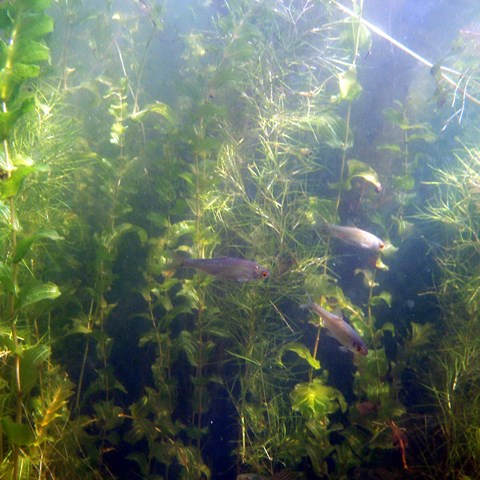Contact
Max Lindmark, Researcher
Department of Aquatic Resources, Institute of Coastal Research, SLU max.lindmark@slu.se, +46 10 478 41 73

Climate change-induced warming can drastically shift the structure and dynamics of populations, shows a new study of fish populations. This occurs when the effect of temperature depends on individual body size, which is the case in several species. The collaborative study between researchers from Swedish University of Agricultural Sciences and the University of Washington, recently published in the journal Ecology Letters, reveals the importance of variation in body size within animal populations for their responses to climate warming.
With the exception of birds and mammals, the body temperature and biological processes of animals vary with that of the environment. Previous studies suggest that in such animals, climate warming leads to faster body growth but smaller final body sizes.
Body size in turn shapes both the feeding capacity of an individual and their resource requirements – larger individuals need more food than small individuals. In addition to body size, feeding and growth in size also depend on temperature. However, the effect of temperature on body growth depends on the individual's size, but how this affects the response of animal populations to climate warming is poorly understood.
- We know from previous work that population size structure and their responses to mortality can be understood from processes such as food dependent growth, competition and predation. In our study, we show that temperature also regulates the population's size structure and response to mortality when its effects depend on body size, says Ph. D. student Max Lindmark at the Department of Aquatic Resources (SLU Aqua), the lead author of the study.
The study was based on data analysis of the joint effect of body size and temperature for metabolic rate in 20 fish species, combined with a size-structured dynamical model developed based on experiments on the common fish species roach. Model analyses revealed that such size-dependent temperature effects shape the population structure and dynamics in warmer climates, which is completely new knowledge.
This means that warming can have completely different consequences for fish populations. Total fish biomass can either increase or decrease following warming, and the population can be dominated by either small or large individuals, because individuals of different body size both compete with each other and are affected differently by temperature. These findings have implications also for how food webs respond to warmer environments, for instance in how warming may shape co-existence among fish species and yields from fisheries. To predict the effects of climate warming on populations and likely food-webs, this study shows that it is necessary to account for variation in body size within species, size-dependent interactions among individuals and size-dependent temperature effects.
More information:
Article:
Max Lindmark1 (1), Magnus Huss (1), Jan Ohlberger (2) and Anna Gårdmark (1). Temperature-dependent body size effects determine population responses to climate warming. Ecology Letters,volume, issue (2017), doi: 10.1111/ele.12880
(1) Department of Aquatic Resources, Institute of Coastal Research Swedish, University of Agricultural Sciences Skolgatan 6, SE-742 429, Öregrund, Sweden
(2) School of Aquatic and Fishery Sciences University of Washington Seattle, WA 98195, USA
Max Lindmark, Researcher
Department of Aquatic Resources, Institute of Coastal Research, SLU max.lindmark@slu.se, +46 10 478 41 73